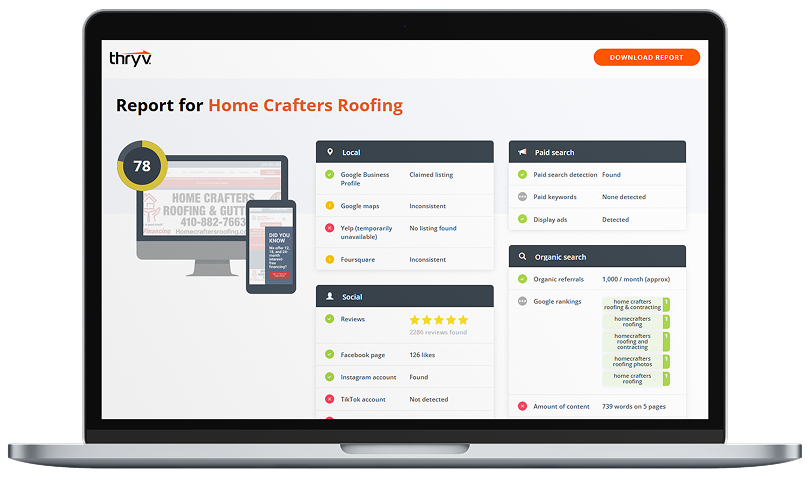At the end of the year, most small businesses face a common challenge: too many projects and not enough time. Between wrapping up client work, preparing for tax season, and setting up next year’s goals, it’s easy to lose focus on what actually drives profit.
That’s where a clear project prioritization framework becomes essential. By ranking initiatives based on return on investment (ROI) potential, balancing quick wins with long-term growth efforts, and eliminating low-value tasks, you can ensure every hour of work contributes to measurable business results. We’ll walk through how to identify and prioritize the high-impact projects that move the needle before year-end, helping your small business close Q4 strong and start the new year ahead.
Small Business Project Management
1. Build a framework for ranking projects by ROI potential..
2. Balance quick wins with long-term growth initiatives.
3. Eliminate low-value tasks and focus on profit drivers.
4. Align projects with year-end financial goals.
5. Reassess team capacity and workflow bottlenecks.
6. Turn your framework into a Q4 action plan.
7. Review and celebrate progress along the way.
Market and Grow Your Business More Effectively With Marketing Center
Marketing Center helps you attract new customers to your business and shows you which marketing strategies work best for your customers so you don’t waste time and money on the wrong tactics.

1. Build a framework for ranking projects by ROI potential.
Every task might feel urgent, but not every project delivers equal value. Begin by establishing a straightforward scoring system that ranks projects based on potential ROI, the effort required, and their strategic alignment with your objectives.
Analyze projects by:
- ROI Potential: Estimate how much revenue, cost savings, or customer growth each project could bring.
- Effort Level: Assess time, team capacity, and resources needed to complete it.
- Strategic Value: Consider how each project aligns with your long-term objectives, such as expanding market reach or enhancing customer experience.
By visualizing this data in your small business project management dashboard, you can quickly identify which projects offer the highest impact for the least strain on your resources.
Pro Tip: Tools like Thryv’s dashboard reporting can help track ROI by channel or initiative, keeping your project prioritization data-driven and transparent.
2. Balance quick wins with long-term growth initiatives.
When time is short, it’s tempting to focus solely on quick wins and projects that can be completed fast, showcasing progress. While these are valuable, they shouldn’t come at the expense of your future growth.
A balanced approach combines short-term momentum with long-term payoff:
- Quick Wins: Tasks like automating review requests or updating your local listings deliver fast results and free up bandwidth.
- Growth Initiatives: Larger goals (such as launching a new product line or expanding into new markets) take longer but create lasting business stability.
Think of it like diversifying a portfolio: quick wins provide cash flow, while long-term growth initiatives build equity in your business.
3. Eliminate low-value tasks and focus on profit drivers.
The biggest productivity killer in Q4 isn’t lack of motivation – it’s distraction. Routine admin work, duplicate efforts, and “nice-to-have” projects often drain time without contributing to your bottom line.
Use your project prioritization framework to identify low-value tasks that can be:
- Automated (e.g., social media scheduling, review responses)
- Delegated to another team member or contractor
- Eliminated if they don’t align with your goals
Clearing the clutter enables you to focus on profit-driving projects, such as enhancing conversion funnels, nurturing high-value leads, or refining customer retention programs.
Pro Tip: With Thryv’s project and task tools, small business owners can streamline workflows, automate repetitive tasks, and keep everyone accountable as deadlines approach.
4. Align projects with year-end financial goals.
Even the best project plan can fall flat if it doesn’t align with your business’s financial reality. Before investing time or resources, evaluate how each project supports your Q4 revenue targets and budget constraints.
Ask:
- Will this project increase profit, reduce costs, or improve cash flow?
- Can it be completed without overextending staff or incurring excessive costs?
- Does it prepare the business for a stronger Q1 launch?
Tying your priorities directly to financial outcomes ensures that you’re not just staying busy, but also staying profitable.
5. Reassess team capacity and workflow bottlenecks.
A project’s impact isn’t just about what gets done, but who can do it and how efficiently. Conduct a quick team audit to identify bottlenecks and redistribute tasks to improve workflow. Use your small business project management tool to visualize workload, deadlines, and task ownership. This helps prevent burnout and ensures your highest-priority work gets the proper focus.
Pro Tip: With Thryv, automated reminders, shared task lists, and progress dashboards can help teams stay accountable and aligned across multiple projects.
6. Turn your framework into a Q4 action plan.
Once you’ve ranked your initiatives, mapped your quick wins and long-term goals, and cut low-value tasks, it’s time to execute. Create a Q4 business planning calendar that lays out each project, its timeline, and measurable success criteria.
Include:
- Deadlines and milestones
- Task owners and dependencies
- Metrics to track progress and impact
By closing out the year with focus and clarity, you set yourself up for a stronger start in January – with a leaner task list and more momentum.
7. Review and celebrate progress along the way.
Before year-end chaos peaks, schedule time to review what’s working and recognize team wins. A brief monthly check-in or dashboard review keeps your project prioritization on track and morale high.
Reflect on:
- Which projects delivered the most ROI?
- Which quick wins created the most significant efficiency boost?
- What can be postponed, automated, or improved next quarter?
Celebrating progress keeps your team motivated to finish strong and gives you a head start on your business planning for next year.
Close the Year With Focus, Not Friction
Prioritizing high-impact projects isn’t just about getting more done; it’s about making sure what you do matters. By applying a clear project ranking framework that balances short-term wins with long-term vision and eliminating time-wasters, small business owners can end the year with tangible results and renewed confidence.

Modern Small
Business Playbook
Find expert tips and tools to help you streamline communications, automate your marketing efforts, improve your business operations, and more in this free guide.





